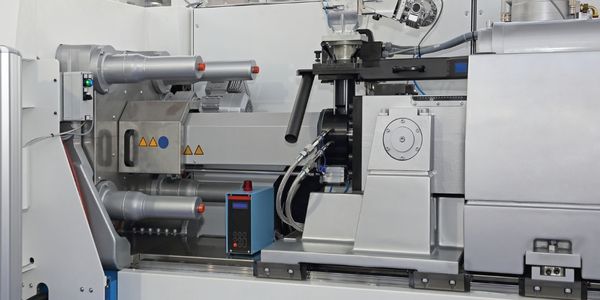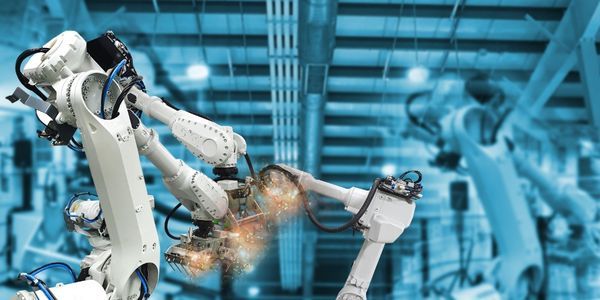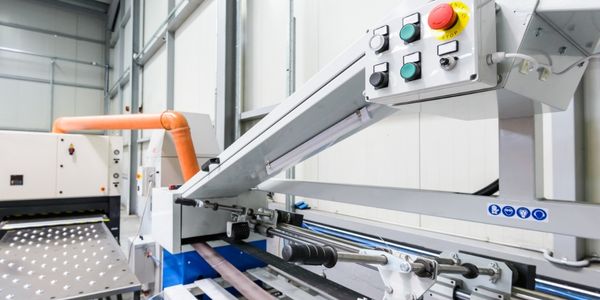公司规模
Large Corporate
地区
- Europe
国家
- Germany
产品
- SAP Business One
- DocuWare
技术栈
- ERP System
- DMS System
实施规模
- Enterprise-wide Deployment
影响指标
- Productivity Improvements
- Digital Expertise
技术
- 功能应用 - 企业资源规划系统 (ERP)
适用功能
- 离散制造
- 质量保证
用例
- 自动化制造系统
服务
- 系统集成
关于客户
Alfred Rexroth 是一家在金属行业拥有悠久历史的公司。该公司总部位于柏林,为各行各业的客户生产复杂零件,但主要是医疗和制造工厂工程领域。该领域的文档要求特别高。该公司每年需要归档数十万份文件。该公司设有多个部门,包括会计、采购、销售、生产计划、工作准备、物流、质量保证、文档、制造和人力资源。
挑战
总部位于柏林的金属行业公司 Alfred Rexroth 每年需要归档数十万份文件。由于搜索过程耗时,该公司在检索这些文件时面临挑战。他们决定将 ERP 系统切换到 SAP Business One,并寻找新的 DMS 系统,因为更新以前的系统成本太高,而且需要昂贵的顾问费用。该公司还面临着跟踪发票的问题,因为发票以循环文件的形式在公司内发送。该公司还必须为制造的每种产品编制大量文档,并将其提供给客户。
解决方案
Alfred Rexroth 与其系统公司合作,在其会计部门实施 DocuWare,并安装了一个用于授权传入发票的工作流程。发票要么被扫描,要么从电子邮件收件箱中自动检索,编制索引并存档在中央文档池中。内置的升级流程可确保不会遗漏任何发票。一旦文档最终被签回会计部门并(如果获得批准)自动发布和存档,工作流程就结束了。不仅会计文档存储在电子文档池中,而且公司各个部门生成的所有文档也存储在电子文档池中。由于与 ERP 系统的接口,所有需要归档的内容都会自动编制索引并存储在 DocuWare 中。纸质文件被扫描并存档。使用方便的全文搜索,所有来自各个部门的授权人员都可以访问这些文档。
运营影响
数量效益

Case Study missing?
Start adding your own!
Register with your work email and create a new case study profile for your business.
相关案例.

Case Study
Plastic Spoons Case study: Injection Moulding
In order to meet customer expectations by supplying a wide variety of packaging units, from 36 to 1000 spoons per package, a new production and packaging line needed to be built. DeSter wanted to achieve higher production capacity, lower cycle time and a high degree of operator friendliness with this new production line.

Case Study
Robot Saves Money and Time for US Custom Molding Company
Injection Technology (Itech) is a custom molder for a variety of clients that require precision plastic parts for such products as electric meter covers, dental appliance cases and spools. With 95 employees operating 23 molding machines in a 30,000 square foot plant, Itech wanted to reduce man hours and increase efficiency.

Case Study
Fully Automated Visual Inspection System
Tofflon has developed a fully automatic machine that uses light to inspect vials, medicine bottles, or infusion containers for glass fragments, aluminum particles, rubber grains, hairs, fibers, or other contaminants. It also detects damaged containers with cracks or inclusions (microscopic imperfections), automatically removing faulty or contaminated products. In order to cover all production processes for freeze-dried pharmaceuticals, Tofflon needed to create an open, consistent, and module-based automation concept.

Case Study
SAP Leonardo Enabling Rocket Science
At times, ULA has as many as 15 different operating systems dedicated to overlapping processes, such as rocket design, testing, and launch. Multiple systems created unnecessary costs and unwanted confusion among workers at offices, factories, and launch sites in different location. In order to improve collaboration and transparency during vital activities that directly influence mission success, ULA wanted to improve data sharing and streamline manufacturing processes.

Case Study
IIC Smart Manufacturing Connectivity for Brown-field Sensors
The discrete manufacturing domain is characterized by a strictly hierarchical structure of the automation systems, commonly referred to as the automation pyramid. Data acquired by a sensor typically flows through an IO-module into a Programmable Logic Controller (PLC) which manages the local real-time control system. As all process data are concentrated in the PLC, re-programming the PLC and thus, implementing interfaces to access these data appear to be the natural choice to transfer them to the IT system. However, for brownfield installations this choice has proven impracticable for the following two reasons:In brownfield facilities, PLC usually operate within a once-specified environment and are rarely re-programmed. That is why the active staff is often not familiar with the code and lacks of the competence to modify the existing implementation in a reasonable amount of time.Furthermore, for cost reasons, any PLC was selected to exactly match the requirements of the environment within which it was intended to operate. That is why it cannot be assumed that a PLC will be able to support additional tasks such as communicating data through additional interfaces.

Case Study
Smart Factory Solutions for Tobacco Industries: Bridging the Manufacturing Generation Gap and Improving Operational Efficiency
The tobacco industry, represented in this case by British American Tobacco (BAT), is facing a decline in cigarette volumes worldwide. This decline has led to an increased emphasis on efficient supply chains and optimized production processes. The industry is also grappling with the need for agile production facilities and the integration of Industry 4.0 to accommodate diverse production requirements. BAT, in particular, was seeking a factory solution to automate their product control processes, from the transportation of tobacco and cigarette paper to the placement on cigarette machines and the packing conveyor. The company also needed to support the continuous use of legacy equipment, such as relay-controlled cigarette machines dating back to the 90s and AMK servo drive systems, to sustain production levels at speeds of 8000 to 16000 pieces per minute. Furthermore, changing regulatory guidelines necessitated flexibility in labeling requirements.







